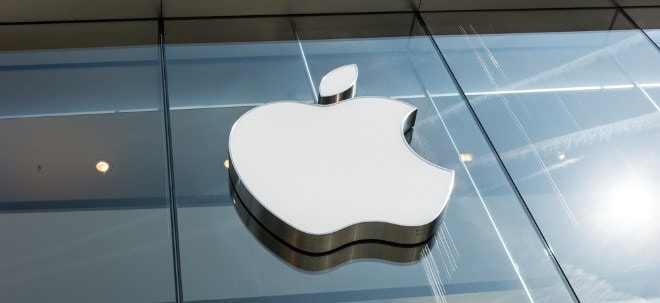Study Shows IBHS's FORTIFIED Program Reduced Hurricane Sally Damage
MONTGOMERY, Ala., May 19, 2025 /PRNewswire/ -- Coastal homeowners with FORTIFIED homes are better protected from hurricanes than those living with standard construction, a first-of-its kind study by the University of Alabama's Center for Risk and Insurance Research (CRIR) commissioned by the Alabama Department of Insurance has shown.
The peer-reviewed study analyzed the real-life effectiveness of the Insurance Institute for Business & Home Safety (IBHS) FORTIFIED mitigation program, a voluntary construction and re-roofing standard designed to strengthen and protect homes from high winds and heavy rain, during Hurricane Sally.
It found FORTIFIED homes suffered significantly less damage and required fewer insurance claims than homes built through standard construction methods when Hurricane Sally made landfall at Gulf Shores, Alabama, as a strong Category 2 storm in September 2020.
The FORTIFIED homes also fared better than homes built to municipal building codes with identical criteria but without the documentation and evaluation FORTIFIED requires for designation. While the study did not examine the cause, it is likely the robust evaluation process required to receive the IBHS FORTIFIED designation plays a factor.
The study estimates that insurers would have saved $105.6 million in losses if all homes in the storm's path had been built or retrofitted to the FORTIFIED Roof standard. Insurers would have saved $116.1 million if the homes had been built to the FORTIFIED Home─Gold standard which adds in protection from damage typically caused by more intense storms.
Hurricane Sally was the nation's first hurricane to strike an area with a large sample size of FORTIFIED homes, providing an important opportunity to compare construction methods and outcomes in the face of a category 2 storm.
"We knew anecdotally that the FORTIFIED homes had performed well during Sally, but we could not have been more pleased when we reviewed the hard data," said Alabama Insurance Commissioner Mark Fowler. "The FORTIFIED system exceeded every expectation and proved that mitigation works not just in a controlled lab setting but for real-world threats we face in Alabama and along with Gulf Coast."
The study reveals claim severity of FORTIFIED homes decreased by 15 percent to 40 percent. Claim severity is the total amount of claims paid divided by the number of claims paid.
FORTIFIED, at all levels studied, reduced loss frequency by at least 55 percent and as much as 74 percent. Loss ratio, defined as losses divided by premiums, also decreased by between 51 and 72 percent.
When combining the reductions in claim frequency and claim severity, the FORTIFIED system reduced deductibles paid by policyholders by more than 60 percent.
"The Center's Hurricane Sally report doesn't just quantify the effectiveness of the FORTIFIED program, it clearly demonstrates that homes can be built to survive storms, making them eminently more insurable," said IBHS CEO Roy Wright. "This report should be a clarion call to communities across the country, urging them to implement Alabama's multipronged approach to promoting disaster mitigation."
The information was collected via a data call to coastal insurers, specifically targeting homes with hurricane wind coverage south of I-10 in Alabama.
The study sample includes information from more than 40,000 insured properties in coastal Alabama. That includes 25,093 conventional homes, 7,685 homes built to supplemental codes and 7,417 FORTIFIED houses in Coastal Alabama. Of the FORTIFIED homes sampled, 1,705 were built to the FORTIFIED Roof standard and 5,712 were built to the FORTIFIED Gold standard.
"From this study, we now know conclusively that FORTIFIED works, allowing us to empower Alabamians and our communities across the state to build stronger, live safer and recover quicker," Fowler said.
The study did not include claims data involving fallen trees, as the FORTIFIED system is not designed to protect against tree damage.
Alabama created a unique combination of financial incentives to promote the adoption of FORTIFIED, including premium discounts, tax credits and policy endorsements. It also launched Strengthen Alabama Homes, an innovative grant program that helps homeowners upgrade to a FORTIFIED Roof. This combination of public support catalyzed the private market, which accounts for 83 percent of the state's FORTIFIED homes.
Alabama is the most FORTIFIED state in the country, with more than 51,000 designated homes. The majority of those homes are located in Baldwin and Mobile counties.
The FORTIFIED system has three levels of certification for homes: FORTIFIED Roof, FORTIFIED Silver and FORTIFIED Gold.
The FORTIFIED Roof and FORTIFIED Gold levels were examined in the study. FORTIFIED Silver was not included due to the small sample size available.
The FORTIFIED Roof level is designed to keep the roof on and the rain out during high-wind storms. It includes sealing the roof deck, locking down roof edges and installing impact-resistant shingles.
The FORTIFIED Silver level requires chimney bracing and impact and pressure-rated garage doors.
The FORTIFIED Gold level is a more holistic approach, combining the features of FORTIFIED Roof and Silver and also requiring the home's entire structure to be tied together.
FORTIFIED Roof is the standard for the Alabama Department of Insurance's Strengthen Alabama Homes grant program, which awards $10,000 to help homeowners retrofit their homes against windstorms. To date, the program has retrofitted 8,660 homes across the state.
Additional Quotes about the CRIR Hurricane Sally Report
Governor Kay Ivey
"When I was Lieutenant Governor, we passed the Strengthen Alabama Homes Act, creating the nation's first program to help residents harden their homes against severe storms, based on the FORTIFIED system. We knew we needed new solutions to build stronger instead of reliving the endless cycle of rebuilding and repairing after every storm.
More than a decade later, the proof is conclusive: FORTIFIED works.
While Hurricane Sally was our first major test, we know it won't be the last. We will continue to invest in Alabama's resilience preparedness, knowing strong homes lead to strong communities that can weather any storm."
Senator Katie Britt
"I'm proud to see Alabama's FORTIFIED program stand as a national model for safeguarding communities and homes. The results of this study only further demonstrate the program's success and the effectiveness of investing in strong and resilient building. I applaud the Alabama Department of Insurance for leading the way in these efforts that have – and will continue to – protect homes, lower insurance costs and save lives."
Rep. Frances Holk-Jones – House District 95
"Coastal Alabamians truly understand the challenge of rebuilding our lives after a storm. We've come together to restore our communities after Hurricane Frederick, Hurricane Ivan and so many others. Thanks to the Fortified program, cleaning up after Hurricane Sally was much easier. This study reinforces what we've seen firsthand: Fortified offers homeowners the peace of mind that, when the storms hit, they will wake up with a roof over their heads."
Rep. Chip Brown – House District 105
"The study proves that it is not only possible to protect our homes against hurricanes, but it is also the financially smart thing to do. Dollars invested in resilient construction ahead of storms prevent expensive repairs after storms. The Fortified program been a tremendous investment in our South Alabama communities, and we are committed to expanding its reach for years to come."
Former Alabama Insurance Commissioner Jim Ridling
"Hurricanes Ivan and Katrina left our state battered and facing an insurance crisis. Carriers were pulling out of the market, consumers were hurting, and state leaders were grappling for answers. We had to think differently. We had to prepare better on the front end so we could avoid chaos on the back end. The storms were going to come. We had to change the economics of what happened after the storm hits.
Adapting the IBHS Fortified building standard through the Strengthen Alabama Homes program, coupled with strong local building codes and mandated wind mitigation discounts, helped us stem the cycle of loss, making Alabama not only a safer place to live, but a state with a healthy insurance market. It has changed the stability of insurance market and the economic landscape of coastal Alabama."
Julie Shiyou-Woodard, President and CEO of Smart Home America
"This study validates what Smart Home America and others have been sharing for a long time: resilience at the community level is achievable and affordable. Changing our building practices to collectively reduce risk is a long, messy, and sometimes contentious conversation, but it is possible and worthwhile."
Fred Malik, Managing Director of FORTIFIED at the IBHS
"Because FORTIFIED is based on decades of research, we were not surprised by the results of this study. Yet the validation of our program is incredibly important. Homes across the country are threatened by high wind events and wind-drive rains, and ACIIR's report makes it clear that proactive steps can be taken to reduce the risk damage from those storms."
![]() View original content to download multimedia:https://www.prnewswire.com/news-releases/study-shows-ibhss-fortified-program-reduced-hurricane-sally-damage-302458268.html
View original content to download multimedia:https://www.prnewswire.com/news-releases/study-shows-ibhss-fortified-program-reduced-hurricane-sally-damage-302458268.html
SOURCE Insurance Institute for Business & Home Safety



